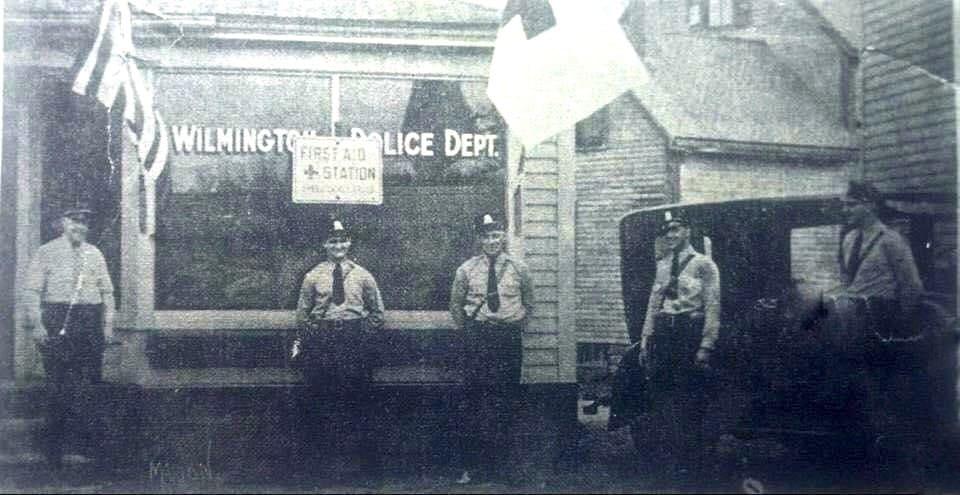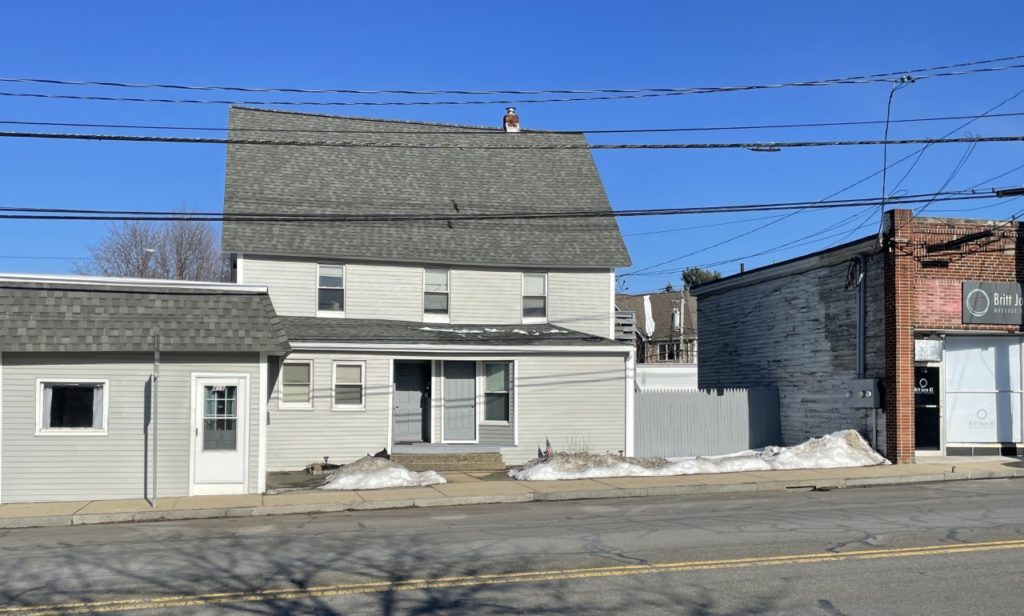After two centuries of being shuffled about the private residences of the constables and chiefs and sharing space with other town departments, the Wilmington Police Department finally acquired their first actual police station in 1930. Soon to be eliminated, was the antiquated system of shoehorning the police department’s needs into whatever space could be carved out of the back rooms and garage bays of other town buildings.
In April of 1930, Chief Walter Hill and the Wilmington Police Department assumed residence in in the former Wilmington News office located between Huntley’s Restaurant and the Ames Block in Wilmington Center. The new space afforded the department a chance to expand, a luxury never before afforded. It was also at this same time that Chief Hill acquired a 1930 Ford Tudor sedan as the department’s first cruiser. However, a cohesive, all in one police station was still a few years off as the jail cells remained located at the highway department garage on Adelaide Street. Although, the acquiring of office space did allow the department to begin having an officer on duty twenty-four hours a day. The office space also was equipped with a telephone and residents could dial directly into the station to reach a police officer. Sadly, Chief Hill passed away before renovations and improvements could be completed. His successor however, Chief Harry Ainsworth, continued what he had begun.
According to the Annual Town Report for 1932, Chief Ainsworth and the men of the department continued with the modernization and completion of the accommodations. The jail cells were moved from the highway department and installed in an expanded space in the building. Iron grates were bolted over the windows in this area to provide extra security. Sink and toilet facilities were also installed and a private office for the conducting of sensitive police business was constructed. The front public entryway opened into a counter area behind which was the on-duty officer. The on-duty area consisted of an office desk equipped with a telephone and typewriter. In 1935 communications were further enhanced when the police cruiser was equipped with radio. Information was telephoned to the State Police barracks in North Reading who in turn sent a teletype message to the State Police Headquarters in Framingham. From there, a radio broadcast would be sent to the Wilmington cruiser. Tedious by today’s standards, it was considered state of the art at the time.
Also, in 1935 the department and the American Red Cross collaborated in establishing a roadside first-aid station at the police station. The Wilmington station was only the second such Red Cross facility in all of New England and the first north of Boston. In celebration of the opening, a large affair was held at the Wilmington Theatre. In attendance were members of the police department, state representatives, members of town government and members of the public. At the ceremony, Chief Ainsworth and Officers Harris Hemeon, Burt Frotton, Talbot Sidelinker, Paul Washburn and George Lynch were presented their first-aid certificates by Theodore Reed of the Lowell Chapter of the American Red Cross. The designation and equipping as a first-aid station and the recent acquisition of an ambulance now allowed the Wilmington Police Department to provide valuable life-saving services for travelers and townsfolk alike.
In 1936, the police station became thoroughly modernized with the addition of a radio and teletype of its own. Gone now was the reliance of outside agencies to facilitate communication. With these conveniences, the police department could send and receive teletype and radio messages on its own, a far cry from just a few years prior when a police station did not even exist.


RETURN TO 150 YEARS OF STORIES